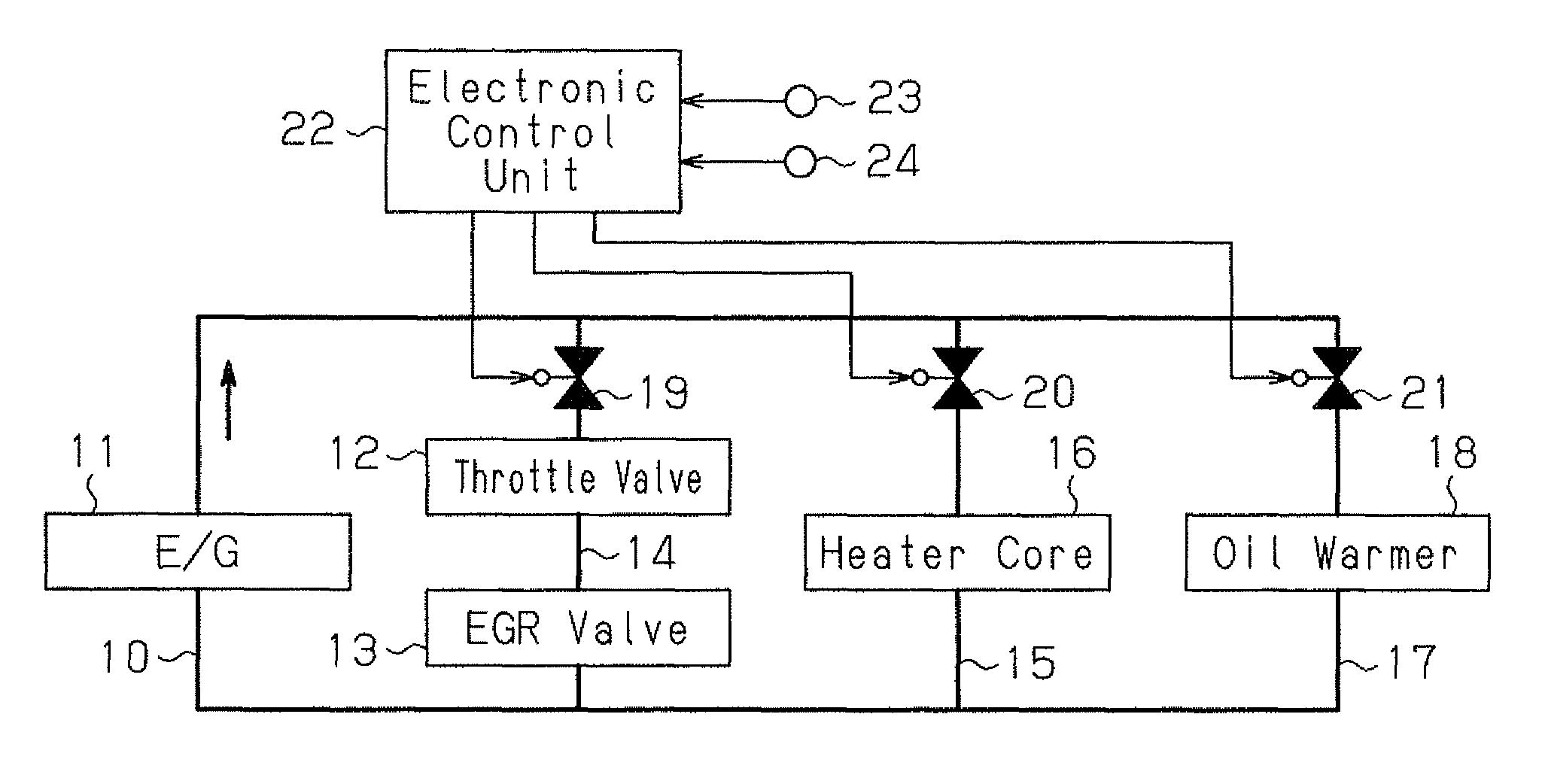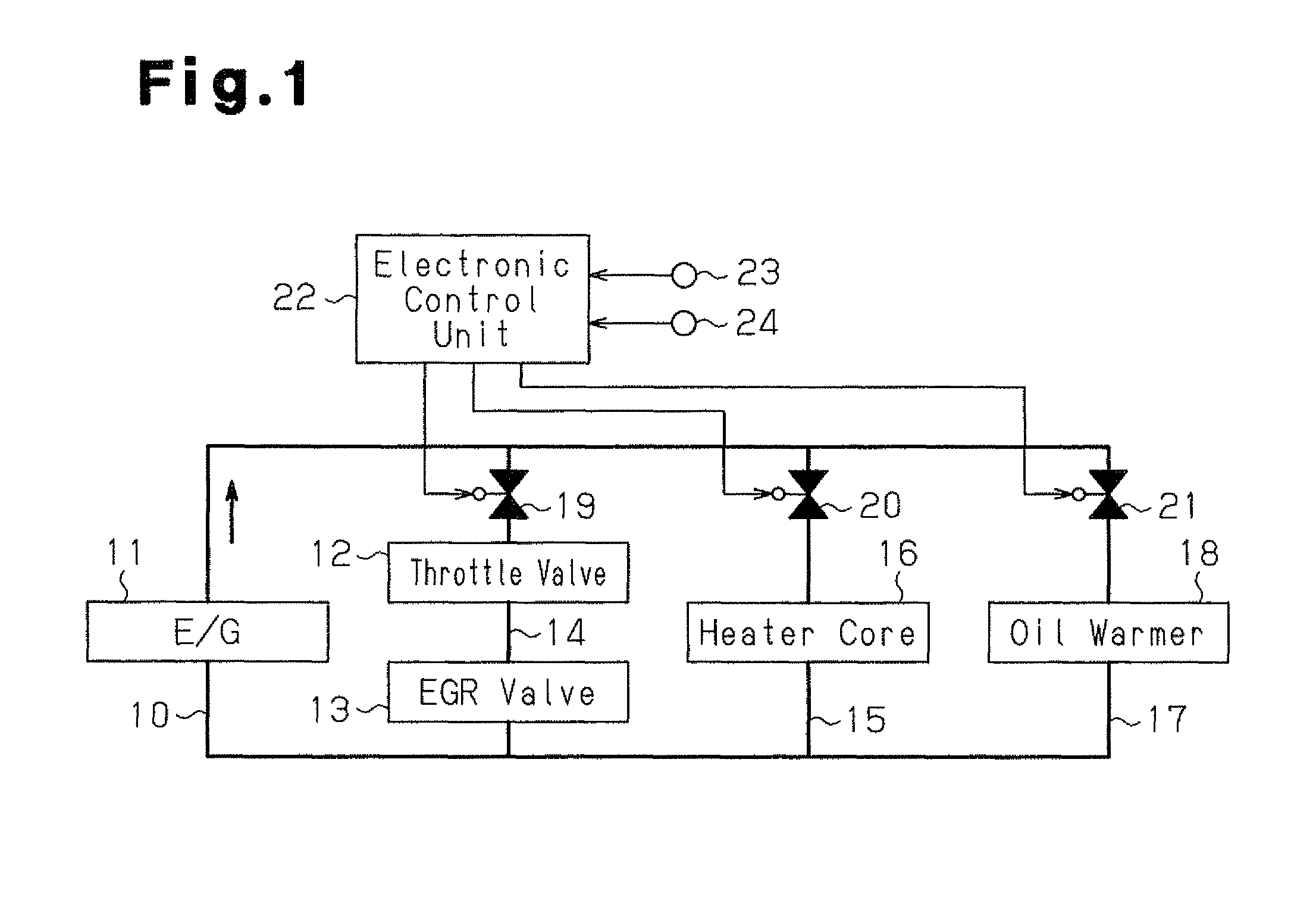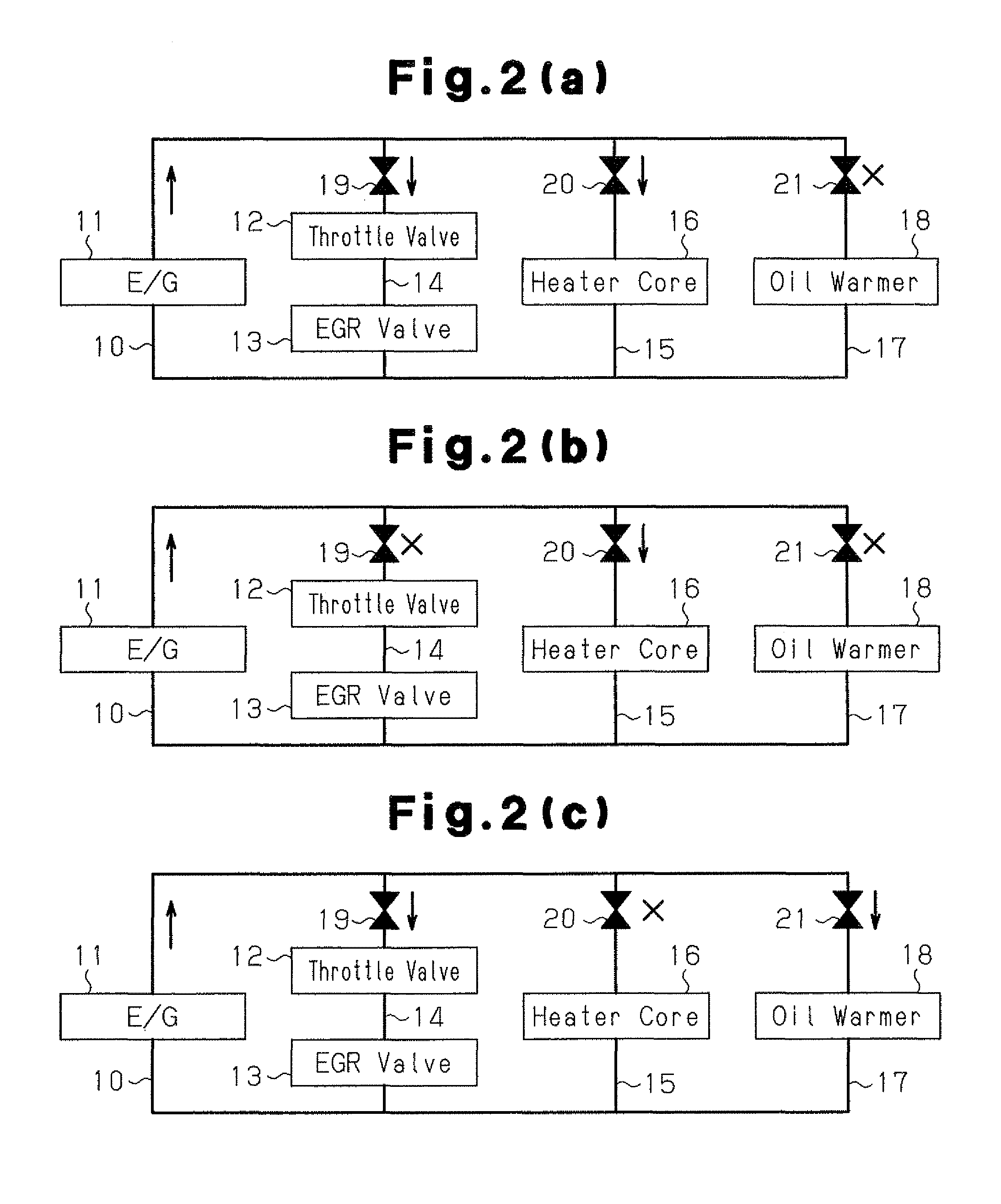Vehicle heat management device
a technology for heat management devices and vehicles, which is applied in the direction of machines/engines, engine starters, transportation and packaging, etc., can solve the problems of affecting the operation of the vehicle, the valve is not operable, and the output of the engine cannot be controlled, so as to achieve the desired operating performance of the vehicle more quickly, improve visibility, and secure the effect of the vehicle's drivability
- Summary
- Abstract
- Description
- Claims
- Application Information
AI Technical Summary
Benefits of technology
Problems solved by technology
Method used
Image
Examples
first embodiment
(First Embodiment)
[0019]A first embodiment of a heat management device for a vehicle according to the present invention will now be described with reference to FIGS. 1 to 3. The heat management device for a vehicle of the first embodiment controls heat supply from an engine using engine coolant water as heat transfer medium to components of the vehicle. In the first embodiment, the engine corresponds to the heat source mounted in the vehicle.
[0020]The configuration of the heat management device for a vehicle of the first embodiment will hereafter be described with reference to FIG. 1. The vehicle in which the first embodiment is employed includes a coolant circuit 10 for circulating coolant water after the coolant water is heated by an engine 11 serving as the heat source. The coolant circuit 10 is divided into three coolant paths, which are a valve coolant path 14, a heater coolant path 15, and a warmer coolant path 17, at positions downstream of the engine 11.
[0021]The valve coola...
second embodiment
(Second Embodiment)
[0042]A second embodiment of the heat management device for a vehicle according to the present invention will hereafter be described with reference to FIGS. 4 and 5, mainly on the differences between the second embodiment and the first embodiment.
[0043]With reference to FIG. 4, the configuration of the heat management device for a vehicle of the second embodiment will be described. The vehicle in which the second embodiment is employed includes a coolant circuit 30 in which coolant water flows. The coolant circuit 30 extends through an engine 31, a throttle valve 32 and an EGR valve 33 both serving as an intake air amount regulating valve, and a heater core 34 for heating the passenger compartment. As a result, by supplying heat to the coolant circuit 30, the heat is supplied to the throttle valve 32 and the EGR valve 33, which are the intake air amount regulating valves. In the second embodiment, the coolant circuit 30 corresponds to the valve warm-up portion.
[00...
PUM
 Login to View More
Login to View More Abstract
Description
Claims
Application Information
 Login to View More
Login to View More - R&D
- Intellectual Property
- Life Sciences
- Materials
- Tech Scout
- Unparalleled Data Quality
- Higher Quality Content
- 60% Fewer Hallucinations
Browse by: Latest US Patents, China's latest patents, Technical Efficacy Thesaurus, Application Domain, Technology Topic, Popular Technical Reports.
© 2025 PatSnap. All rights reserved.Legal|Privacy policy|Modern Slavery Act Transparency Statement|Sitemap|About US| Contact US: help@patsnap.com



